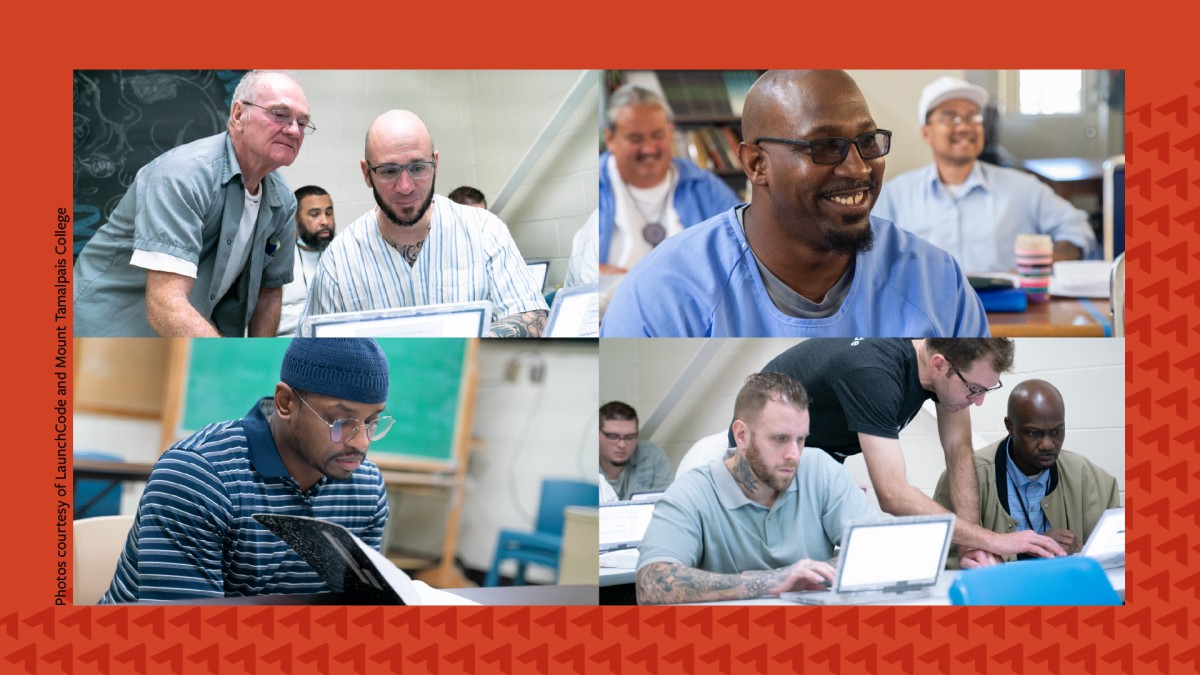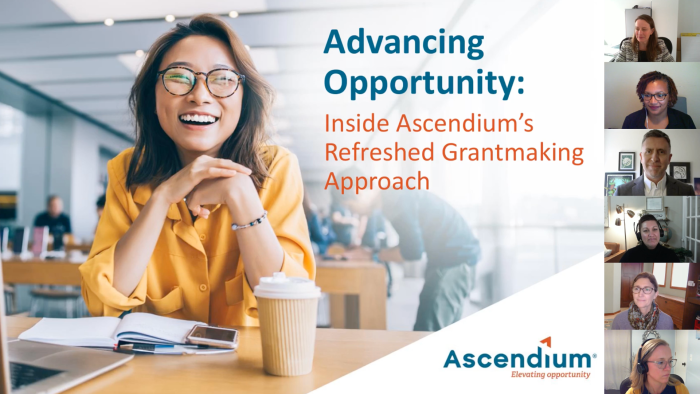
How Ascendium Supports Incarcerated Learners on Reentry Pathways
Research has shown that education dramatically improves the odds that incarcerated learners will successfully reenter the community and workforce upon release. While reinstated Pell Grants expand access to education for these learners, access alone is not enough. Comprehensive support systems must be in place to ensure that education and training translate into long-term stability and career success.
As part of its new Support Learner Success strategy, Ascendium funds initiatives that address financial literacy, academic readiness, and employment connections, demonstrating scalable solutions that other funders and institutions can adopt. Investing in promising approaches not only enhances individual outcomes but also fosters lasting, systemic change.
Addressing Systemic Barriers
Formerly incarcerated individuals face numerous obstacles as they attempt to leverage postsecondary education and workforce training for upward mobility. While Career and Technical Education (CTE) programs in prisons provide valuable skills, learners often lack the employability training and structured transition support necessary to connect their education to real-world opportunities. Additionally, financial insecurity and employer skepticism about hiring justice-impacted individuals further complicate the reentry process. The following initiatives illustrate how targeted investments in redesigning these systems can strengthen reentry pathways.
Support #1: Financial Literacy as a Foundation for Stability
Many reentering individuals face significant financial challenges, including debt, poor credit history, and limited access to banking services. Even though most incarcerated individuals come from low-income backgrounds and often accrue debt related to their convictions, financial literacy is rarely included in postsecondary education in prison programs.
Model: Beyond Savvy Consumers partners with postsecondary institutions to embed financial literacy instruction into prison education programs, offering both a virtual credit-bearing course and an in-person adaptation. Ascendium is investing in this model to build evidence around its effectiveness.
Why It Matters: Researchers like Robynn Cox of the USC Suzanne Dworak-Peck School of Social Work have found that financial insecurity is a major factor in recidivism. Proactively equipping learners with financial literacy skills increases their long-term stability and upward mobility upon release.
Support #2: Employability Skills as a Bridge to College and Career Success
While incarcerated learners often gain technical skills through CTE programs, they frequently lack employability training and structured pathways to jobs or continued education post-release. Without these crucial supports, even well-trained individuals may struggle to secure meaningful employment.
Model: QA Commons is collaborating with the Missouri Department of Corrections to integrate employability skills into CTE programs, train instructors and transition coaches, and establish transfer pathways to community colleges.
Why It Matters: Ensuring that incarcerated learners can apply their education post-release is critical. By embedding employability skills and strengthening education-to-career transitions, this initiative aims to boost employment and college enrollment rates among justice-impacted individuals.
Support #3: Employer Engagement as a Gateway to Workforce Success
Without employer engagement, postsecondary education and workforce training credentials do not always translate into workforce opportunities, limiting upward mobility. Many employers remain hesitant to hire individuals with a history of incarceration, despite evidence that Fair Chance hiring practices benefit businesses and communities alike.
Model: Hudson Link for Higher Education in Prison is expanding a toolkit that equips employers, colleges, and workforce organizations with Fair Chance hiring strategies.
Why It Matters: Employer buy-in is crucial for creating sustainable reentry pathways. Scaling Hudson Link’s model could help remove hiring barriers across industries and provide justice-impacted individuals with better access to stable employment.
Building Sustainable Reentry Pathways
These models showcase promising innovations in establishing effective reentry supports for learners with a history of incarceration. However, ensuring postsecondary success for these learners requires a collective effort. Funders and institutions must invest in proven strategies that address both academic and nonacademic barriers.
Postsecondary education in prison has the power to transform lives — but only if learners have the tools to succeed post-release. By scaling and embedding these evidence-based approaches, we can move beyond access and build systems that enable lasting, positive change.


